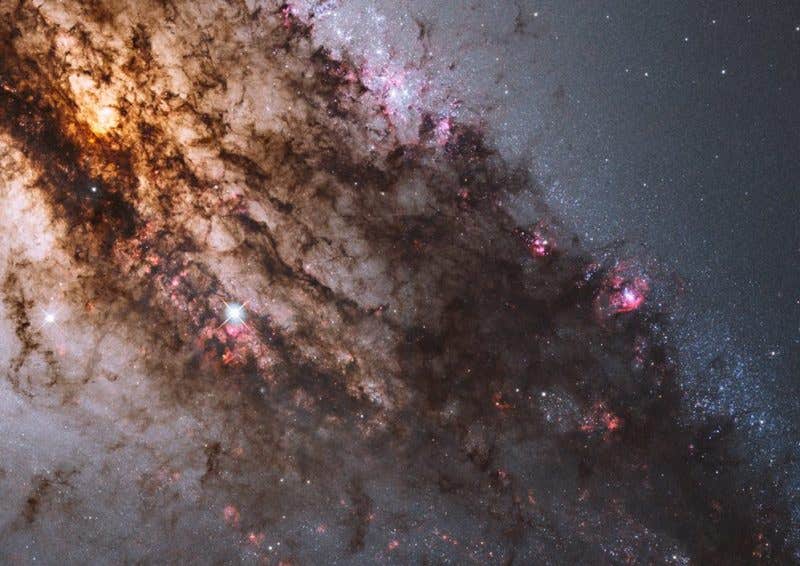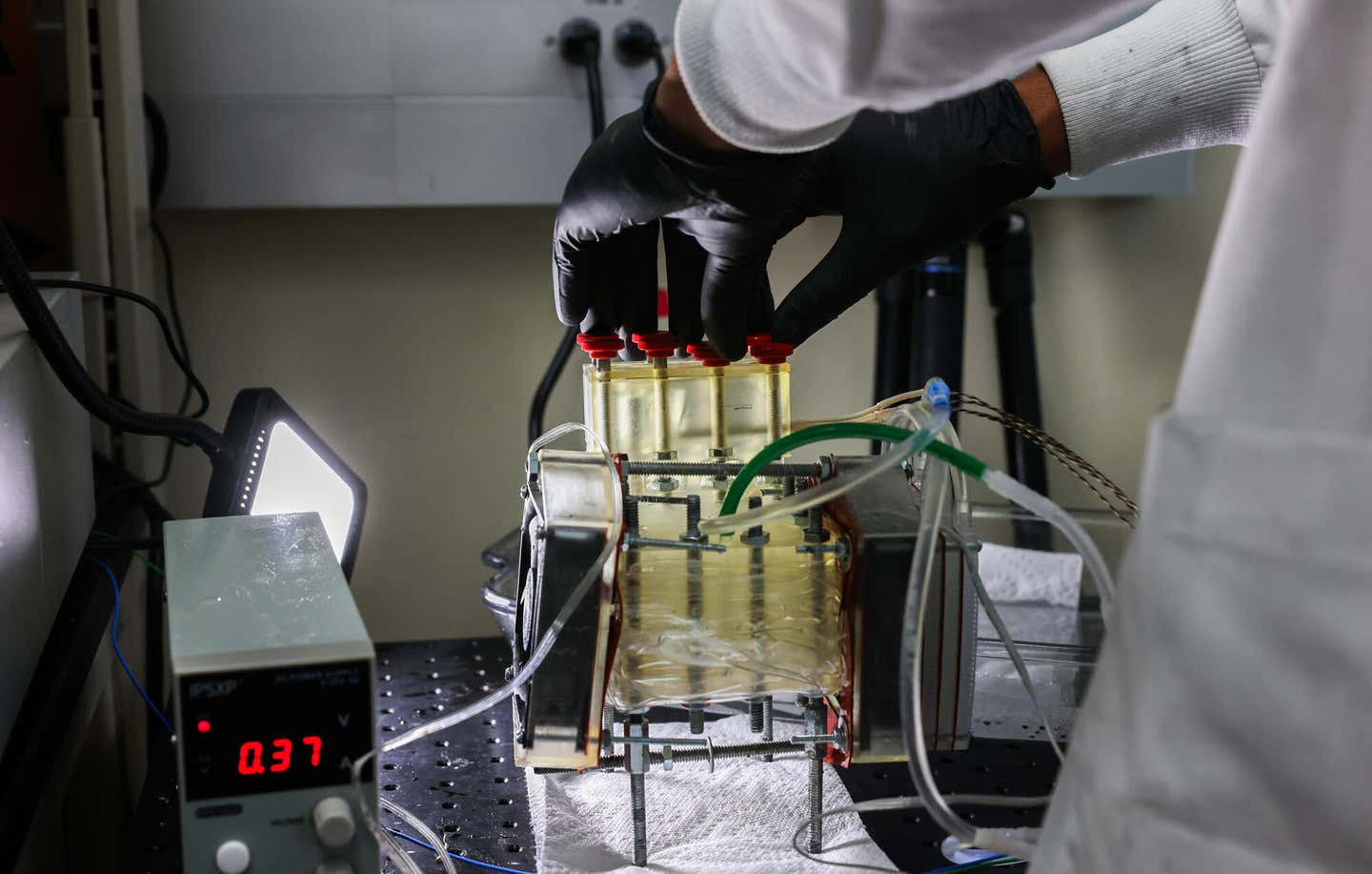Cosmic dust could spread life from planet to planet across the Milky Way
The study suggests that planetary dust particles could escape the gravitational pull of their parent planets and be propelled into space

The study suggests that planetary dust particles could escape the gravitational pull of their parent planets and be propelled into space. (CREDIT: NASA, ESA and the Hubble Heritage (STScI/AURA)-ESA/Hubble Collaboration)
Scientists have long pondered the origins of life in the universe, debating whether it arises independently on different planets or spreads from one world to another. Recent research delves into a simple yet intriguing pathway for the potential spread of life: cosmic dust.
The Earth, estimated to be around 4.53 billion years old, offers tantalizing clues about the early emergence of life. Evidence suggests that simple life forms may have existed on our planet as early as 3.5 billion years ago, possibly even appearing shortly after Earth's formation. However, the question remains whether life originated here or arrived from elsewhere in the cosmos.
The concept of panspermia, the idea that life could be transported through space and seeded on other planets, is not new. However, a study led by Z.N. Osmanov from the Free University of Tbilisi in Georgia explores the feasibility of this process in greater detail.
Titled "The Possibility of Panspermia in the Deep Cosmos by Means of the Planetary Dust Grains," the research proposes that cosmic dust particles could serve as carriers of life across interstellar distances.
Related Stories
Osmanov acknowledges the mystery surrounding the origins of life, describing abiogenesis as a phenomenon still shrouded in uncertainty. However, he shifts the focus to the potential mechanisms through which life could spread beyond its planet of origin.
The study suggests that planetary dust particles could escape the gravitational pull of their parent planets and be propelled into space by radiation pressure. While the concept of life hitchhiking on comets and asteroids is familiar, the idea of dust particles serving as carriers raises intriguing possibilities.
For life to survive on dust grains during interstellar travel, it would need to withstand harsh conditions such as radiation and extreme temperatures. Even if life itself cannot endure such conditions, the study speculates that complex organic molecules essential for life could potentially survive the journey.
Dramatic plumes, both large and small, spray water ice particles and vapor along the famed “tiger stripes” near the south pole of Saturn’s moon Enceladus. (CREDIT: NASA/JPL/Space Science Institute)
Osmanov's calculations propose that over the span of 5 billion years, dust grains could reach a vast number of stellar systems within the galaxy, potentially dispersing life or complex organic molecules on the scale of several hundred light-years throughout the cosmos. This notion aligns with previous research suggesting that dust grains, propelled by solar radiation pressure, could travel to neighboring solar systems in relatively short time frames.
Accounting for the density distribution of stars, the analysis indicates that dust particles emitted by each individual planet may reach up to 10^5 stellar systems. Through investigation within the framework of the Drake equation, Osmanov has inferred that the minimum number of planets in the Milky Way capable of developing life should be around 3×10^7, suggesting that the entire galaxy could be teeming with dust particles containing complex molecules.
Dust in the spiral galaxy M74 appears red in this image from NASA’s Spitzer Space Telescope. Data from Spitzer provided evidence that supernovae – the explosive deaths of massive stars – act as “dust factories,” seeding galaxies with cosmic dust particles. (CREDIT: NASA/JPL-Caltech/STScI)
Furthermore, Osmanov's research demonstrated that dense molecular clouds can effectively trap these planetary dust grains, highlighting their potential significance in the context of panspermia research.
However, the study encounters a limitation regarding the speculative nature of estimating the prevalence of planets with primitive life. Osmanov suggests a staggering number of such planets based on statistical models, but acknowledges the lack of concrete evidence to support this assumption.
Dependence of distance (in light years) of planetary dust particles versus time (in years) for three different values of radii:r=3×10−5 cm (blue), r=5×10−5cm (black), and r=10−4cm (red). The other set of parameters is: M≃2×1033g, L≃3.83×1033erg/s,D=1, ρ=2 g/cm3,n0=1cm−3R(0)≃1AU, ˙ R(0)≃0km/s,andυφ≃30km/s. (CREDIT: ARXIV)
While Osmanov's research sheds light on the potential for life to spread through space via cosmic dust, it underscores the persistent mysteries surrounding the origins and prevalence of life in the universe. The possibility of life originating independently on numerous planets remains speculative, with numerous variables and unknown factors complicating our understanding.
While the research offers valuable insights, it also emphasizes the need for further exploration and empirical evidence to unravel the enigma of life's origins and distribution in the universe.
For more science stories check out our New Discoveries section at The Brighter Side of News.
Note: Materials provided above by the The Brighter Side of News. Content may be edited for style and length.
Like these kind of feel good stories? Get the Brighter Side of News' newsletter.
Joshua Shavit
Science & Technology Writer | AI and Robotics Reporter
Joshua Shavit is a Los Angeles-based science and technology writer with a passion for exploring the breakthroughs shaping the future. As a contributor to The Brighter Side of News, he focuses on positive and transformative advancements in AI, technology, physics, engineering, robotics and space science. Joshua is currently working towards a Bachelor of Science in Business Administration at the University of California, Berkeley. He combines his academic background with a talent for storytelling, making complex scientific discoveries engaging and accessible. His work highlights the innovators behind the ideas, bringing readers closer to the people driving progress.



